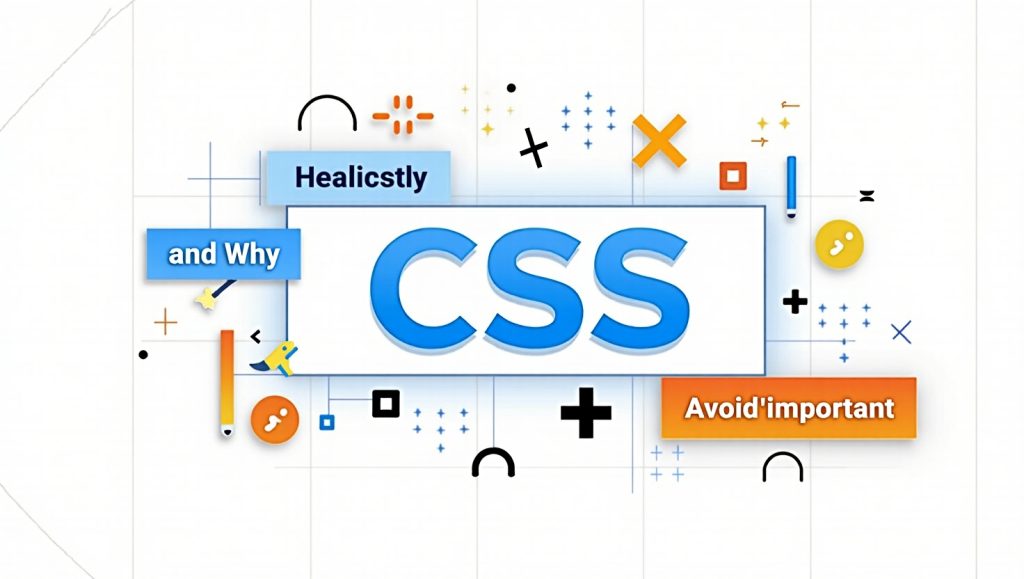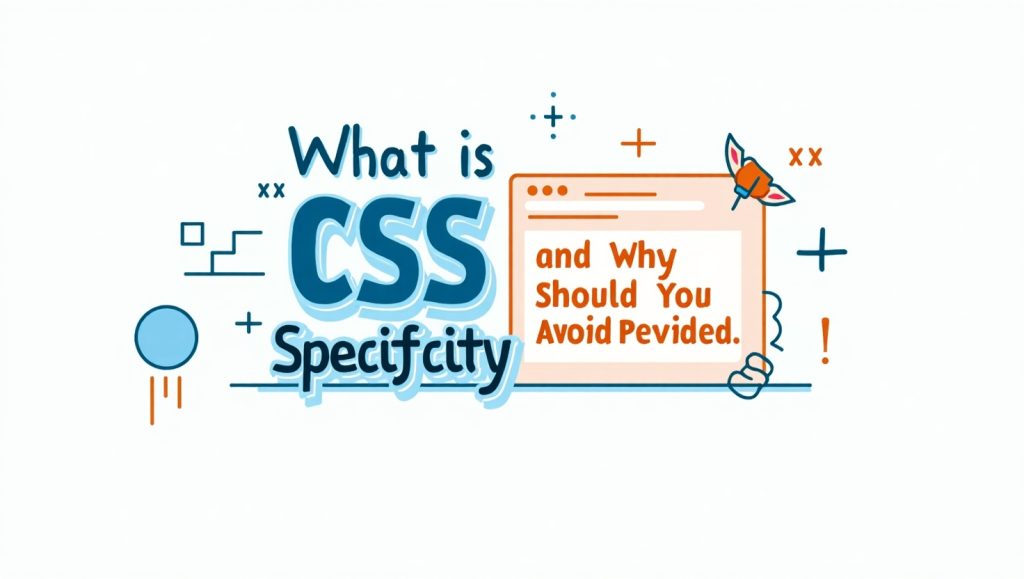Getting a clear view of how CSS really functions helps you write neat and maintainable code, especially in handling style priorities. The article explores the concept of CSS specificity and the common pitfalls one can fall into in overusing !important to the degree that it becomes a messy tangled web full of styles that can hardly be debugged or scaled. Here we talk about what specificity really means, why it matters, and how to avoid the big pitfalls, especially overusing !important.
Understanding CSS Specificity

The CSS specificity is a hierarchy or ranking system browsers use to determine which style is to be applied to an element when two or more conflicting rules exist. This is a core principle in front-end development that plays an important part in how your website design works on different devices and browsers.
Whenever different styles target the same HTML element, the browser uses a technique called specificity to decide which styles should take the upper hand. Every CSS selector carries its own weight. Inline styles have the most specificity, with ids as second, third come classes, then attributes and pseudo-classes, and lastly element selectors.
For example:
- Inline styles (e.g., <div style=”color: red;”>)
- ID selectors (e.g., #header)
- Class selectors (e.g., .menu)
- Element selectors (e.g., div, h1, p)
Specificity is computed using a point system. ID selectors have the highest weight, classes second, and elements are scored the least. Hence, if two conflicting rules are applied, the one with the greater specificity applies.
Keeping this in mind helps you write clean codes by fighting less redundancy. But if you find yourself often fighting your own CSS to make a change, you probably don’t have a specificity problem; you probably have a structure problem.
How Specificity Is Calculated
Calculating specificity can seem complicated at first, but it’s based on a simple point structure. Think of it like a 4-part value: (a, b, c, d).
- a: Inline styles
- b: IDs
- c: Classes, attributes, pseudo-classes
- d: Element names, pseudo-elements
For example:
/* Score: (0,1,0,0) */
#main {
color: blue;
}
/* Score: (0,0,1,1) */
.container p {
color: red;
}
There, the #main rule has a higher specificity score and so, it takes priority over the .container p style rule. If both have the same specificity score, whichever rule is declared later in the stylesheet will apply thanks to the “cascade” of CSS.
Using or regarding those Specificity Calculators will actually help you visualize and debug which styles are being applied and why. It’s an important skill for any front-end developer and something every modern web design agency depends on to scale projects.
Why Using !important Is a Bad Habit
While it may seem like a quick fix for your styles to work, it is actually the most destructive thing that you can do with CSS. This declaration overrides all other styles, even those with higher specificity. In the long run, this makes your code more difficult to maintain and debug.
At first, it might feel like a lifesaver when styles just won’t apply as expected. But using !important is often a sign that your CSS architecture needs improvement. If overused, you enter a specificity war, where you find yourself constantly battling styles with more !important declarations just to make the most basic edits.
For example, say you have this:
.button {
background-color: blue !important;
}
Later, if you want to change the button’s color on hover or in a different theme, you’ll also need to add !important, and so the cycle continues.
Instead, invest time in understanding how specificity works and structure your CSS accordingly. Modular CSS methodologies like BEM (Block Element Modifier) or utility-first frameworks like Tailwind CSS help avoid this trap altogether.
When It’s Okay to Use !important

There are scenarios where using !important is acceptable—but they are rare and should be approached cautiously. These include:
- Utility classes in frameworks (e.g., .text-white in Tailwind)
- Overriding third-party libraries or browser default styles
- Debugging quick fixes (temporary only)
In production code, !important should be the exception, not the rule. If you find yourself relying on it often, it’s a sign you need to revisit your CSS architecture or selector strategy.
How to Avoid !important in Your Projects
So, if !important is not the answer, what is? The solution lies in smart CSS structuring, proper use of selectors, and a solid understanding of how CSS cascades and prioritizes styles. Start with these practices:
- Use specific selectors: Instead of relying on broad ones like div, try .header .nav a.
- Follow naming conventions: Use methodologies like BEM to write more manageable CSS.
- Organize stylesheets properly: Place global, component, and utility styles in separate files if necessary.
- Make use of CSS variables and inheritance: These tools help manage themes and repeated styles more efficiently.
Taking these steps allows your code to stay clean, predictable, and easy to maintain. Plus, it becomes easier to onboard new team members or revisit the code months later.
In fact, applying CSS best practices is often one of the key deliverables when working with a professional web design company.
Use a CSS Methodology for Cleaner Code
Adopting a CSS methodology like BEM (Block, Element, Modifier), SMACSS (Scalable and Modular Architecture for CSS), or OOCSS (Object-Oriented CSS) can significantly reduce your need for !important.
For example, BEM allows you to write reusable and readable CSS classes like:
.button {}
.button–large {}
.button__icon {}
By structuring CSS this way, it’s easier to manage styles across components and avoid unnecessary overrides.
If you’re working on larger applications or collaborating with teams, using these conventions ensures that everyone is on the same page. Many developers and teams working on responsive website design projects rely on these approaches for scalability.
Tools to Help You Manage Specificity
Managing specificity manually can be tricky, especially in large projects. Fortunately, there are tools designed to help:
- Specificity Graph: Visualize the specificity of your entire CSS file.
- Stylelint: A linter that flags overused !important declarations.
- DevTools in browsers: Use Chrome or Firefox to inspect styles and understand which rules are being applied and why.
Leveraging these tools in your development workflow helps keep your CSS maintainable and improves collaboration within teams.
Make Your CSS Debugging Easier
To begin with, avoid rushing to !important and inspect the element in browser dev tools to determine what is exactly wrong. Perhaps the selector is not specific enough, or there’s a rule being overwritten. Knowing what is wrong will help you be a better developer and will help shape your future habits.
Also, add comments that explain why a selection of selectors were chosen if the logic behind their usage is complex. Such comments prove to be nice-to-have while altering code down the road or when passing the project on to another developer.
Proper debugging and documentation are crucial parts of good website maintenance practices and go hand-in-hand with SEO and user experience strategies.
Conclusion
In short, specificity is an important concept that, if mastered, need not ever to be worked around by a hack like !important. Though !important may solve a problem quickly, it is likely to become a maintenance headache later.
Take time to study and understand the nature of specificity, start to use CSS guidelines, and keep armed with all the appropriate tools to analyze your styles. It makes your code look good and gets you ready for scalable and performance-based development.
Once you overcome specificity and stop using !important, you are on the way to cleaner, faster, and more maintainable frontend projects.